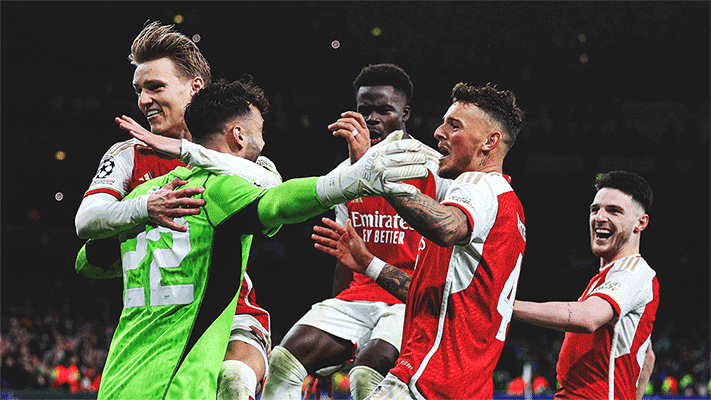When discussing the shape of his Arsenal side, Arsène Wenger frequently uses the word ‘balance’.
He’s generally referring to the relationship between defence and attack, or between cautious possession and immediate attacking.
For example, when analysing the impact of Mathieu Flamini’s return, Wenger said: "It is important for the balance of the team that we have players with his qualities."
When speaking about Theo Walcott’s recovery from injury (his previous one), he said something similar. "He can always give you a different option, and that is vital – you always want to have a perfect balance."
"The peculiar thing is that to find the right balance going forward, a side is often imbalanced in their routes of attack"
The peculiar thing, however, is that to find the right balance going forward, a side is often imbalanced in their routes of attack. That’s particularly obvious at Arsenal so far in 2013/14, where there’s a strong bias towards playing down the right.
Midway through the Premier League campaign, Arsenal had played 42 per cent of their passes down the right flank, 30 per cent through the middle and just 28 per cent down the left.
This lack of symmetry isn’t unusual - amazingly, 17 of the 20 Premier League sides prefer playing down the right, presumably because of the prevalence of right-footers, especially in central positions.
Nevertheless, Arsenal’s bias towards the right is particularly extreme – only Hull and Manchester United play a higher proportion of their passes down that side. Besides, because Arsenal complete so many passes, the tendency is even more pronounced, so assuming the current rate remains steady throughout the league campaign, Arsenal will play over 2,500 more passes down the right than down the left.
But why do Arsenal favour the right so strongly? There are probably three main causes. First, the style of the wide players is crucial to the nature of Arsenal’s attacking. Whereas Walcott was first choice on the right wing until his cruel knee injury against Spurs and looked to make forward runs in behind defences, Arsenal’s left-sided midfielder is usually Santi Cazorla or sometimes Tomas Rosicky, who both drift inside to become an extra central midfielder, overloading the centre but leaving the left bare.

Cazorla heatmap v Newcastle
This gives Arsenal different options: two 'drifters' and Arsenal wouldn’t have so much forward momentum, but two direct players and the Gunners wouldn’t command the midfield.
Those formats are both tactical alternatives, depending upon the opponent, but Wenger has found a nice hybrid of the two approaches with Cazorla and Walcott, and logically, this means Arsenal play the ball right more frequently.
Second, there is a difference in the nature of the full backs, Bacary Sagna and Kieran Gibbs. This is related to the identity of the winger ahead of them - Sagna plays a supporting role behind his winger and is often involved in neat passing moves, whereas Gibbs has space ahead of him, and tends to stretch the game with well timed, quick runs.
Therefore, Sagna plays around nine more passes per game than Gibbs, and has a six per cent better completion rate – the Frenchman is more frequently included in Arsenal’s build-up play, whereas Gibbs is more of a powerful off-the-ball runner.
Finally, Wojciech Szczesny’s distribution is also crucial. When forced to kick long, Szczesny doesn’t always look for Olivier Giroud. Instead, Arsenal have a familiar goal kick routine - Szczesny lobs the ball towards the right flank, taking advantage of Sagna’s impressive leap (as demonstrated by his distribution in the win at Newcastle).

Szczesny's distribution v Newcastle
"We have a tactic going on now with Bacary where I look for him on the flank – and the statistics show we’ve been winning about 75 per cent of those challenges, which is impressive,” he told the Arsenal Magazine. "But it’s more credit to Bacary than me – I just put it in the air and he wins the headers!"
Inevitably, this means Arsenal’s attacks generally start from the right.
In the days of the ‘Invincibles’ a decade ago, Sir Alex Ferguson said he always ensured Manchester United’s right back zone was filled against Arsenal, due to the threat of Thierry Henry, Robert Pires and Ashley Cole down that wing.
These days, it’s the opposite – opponents need to keep their left-back zone covered, because Arsenal routinely attack into that space. Arsenal’s passing is purposeful, reliable and quick - but it’s not symmetrical, which has provided the right balance between retention and penetration.
Copyright 2025 The Arsenal Football Club Limited. Permission to use quotations from this article is granted subject to appropriate credit being given to www.arsenal.com as the source.











